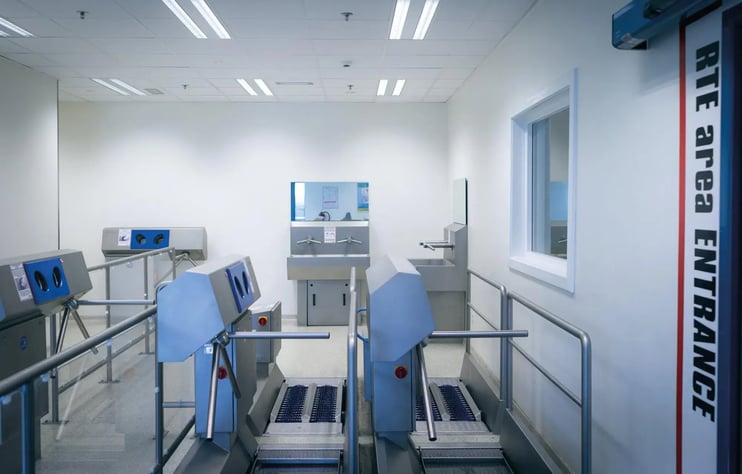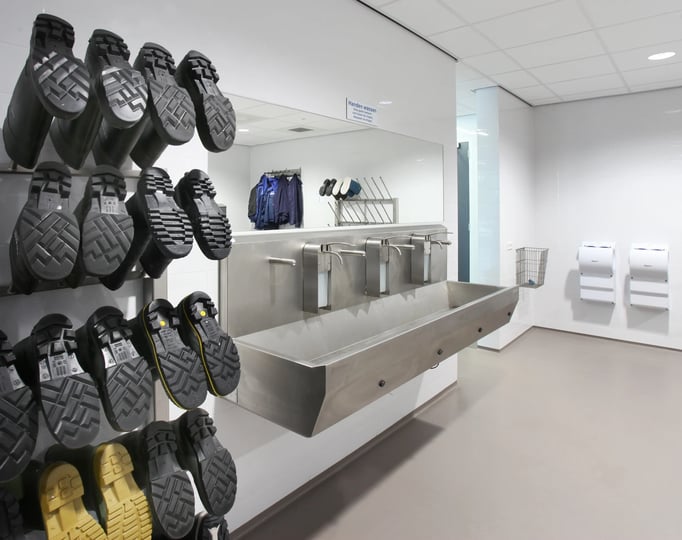5 tips for a hygienic work environment

Organising and cleaning a working environment in the food sector is often underestimated. Efficient hygiene can not be underestimated, especially in production environments where contamination through humans is a risk factor. To curb this risk, we are happy to share 5 tips to help you on your way to better hygiene in the food industry.
1. Non-contact actions for more hygiene in the food industry
Clean, bacteria-free hands are crucially important in relation to hygiene in the food industry. Our hands are the main spreaders of micro-bacteria. Each point of contact is one and to properly regulate personal hygiene in the workplace, non-contact actions are essential. The more non-contact actions, the fewer micro-bacteria will be transferred. It is therefore advisable to replace the different points of contact with for example sensor-controlled hygiene equipment.
View our sensor-controlled sinks
2. Clear communication is key in a hygienic work environment
Not everyone wants to be voluntarily involved with hygiene and it is something that organisations still tend to forget. So put your cards on the table and make sure everyone is familiar with the workplace hygiene risks from the food industry. The importance of good hygiene can not be overemphasised. A person-centred approach is often more efficient than just a notice above the sink.

3. Avoid paper for more hygiene
Using paper towels quickly leads to clutter and high costs. That is exactly what you want to prevent in an area where hygiene plays an important role. So purchase a Dyson Airblade™ hand drier. Quick, efficient and extremely hygienic.
4. Hygiene as an obligation
Access control in combination with a chemical dispenser is a good example of integrating hygiene within the day-to-day process of your company. The goal is to develop the hygiene process through to a streamlined whole. Hand washing, drying and disinfecting in conjunction with cleaning and disinfecting boots or shoes. By incorporating a hygiene lock into this process, these cleaning steps are automatically turned into an obligation. A control gate sees to it that access is granted only after the basic cleaning steps are completed.
5. Hygienic work environment
The more objects set down on a floor, the more spots are created for bacteria accumulations. A hygiene area can be filled with equipment. Despite the fact that in compliance with HACCP guidelines, there are cleaning schedules for these areas, they remain a place of risk. Using built-in systems and for example, suspended walls, the number of contact points with the floor is reduced. This results in:
- Easy cleaning of the floor
- A better support surface as per HACCP guidelines
- Fewer bacterial contact points
- A professional, hygienic appearance of the work environment
.webp)





